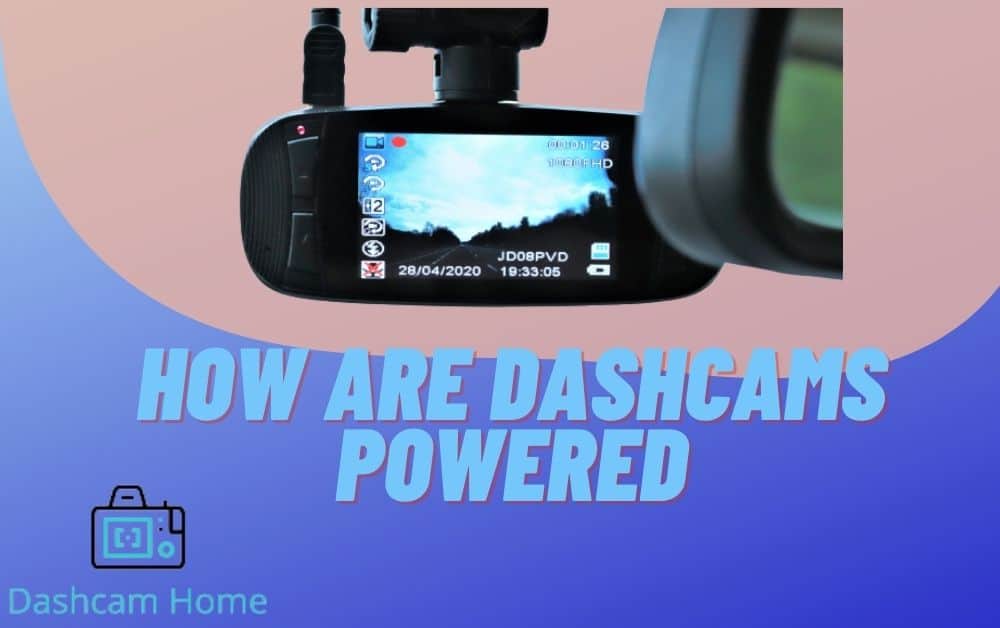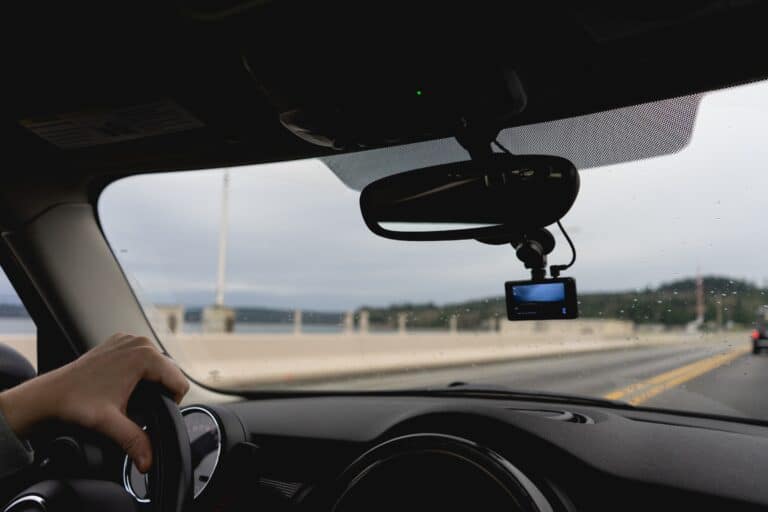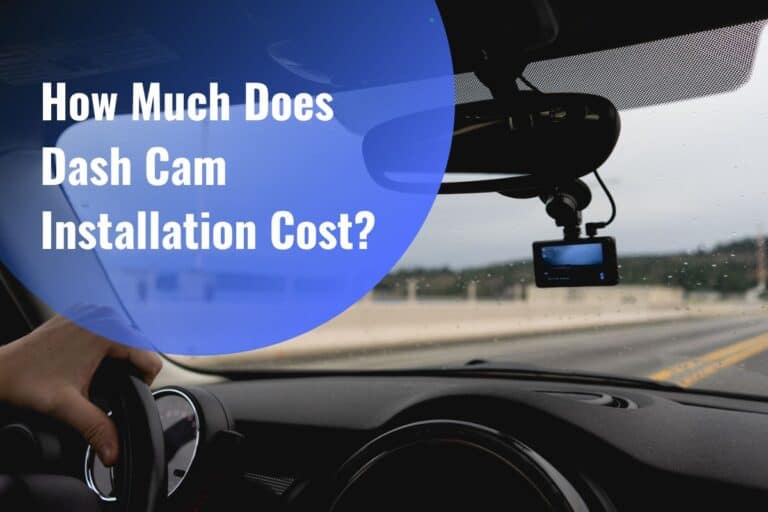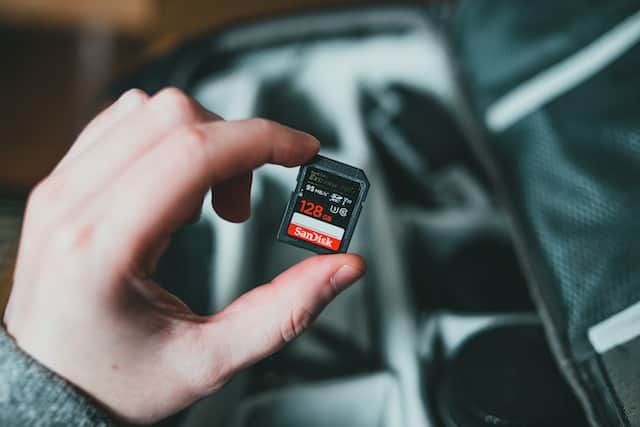How Are Dash Cams Powered? Complete Guide
A dash cam is a device that records videos both inside and outside a vehicle. It’s commonly installed on the windshield or dashboard and can capture 360-degree footage, providing vehicle owners with the evidence they need to prove their innocence in case of an accident or theft. Dash cams are particularly useful when filing insurance claims, as they provide valuable visual evidence.
But how are dash cams powered? That we’ll find out today, In this guide. For instance, we’ll explore different ways to power a dash cam and highlight their pros and cons to help you determine which one is best. These include using the vehicle’s battery, always-on port, and battery packs.
With that said, let’s roll in.
Table of Contents
How to Power Dash Cams In a Vehicle?
There are different ways to power the dash cams, but using the vehicle’s battery is the most common. Below we’ll explore some effective ways to power dash cams in a vehicle.
Vehicle’s Battery

Dash cams are designed to work in conjunction with a vehicle’s battery, and most models come equipped with a built-in battery as a backup. When the vehicle is operating, its battery supplies power to the dash cam, allowing it to turn on and function.
To achieve this, the dash cam is connected to the car’s electrical system through direct wires or the fuse box.
Also read: Which fuse to use for dash cam?
However, when the vehicle’s engine is turned off or the battery voltage drops, the built-in battery kicks in and powers the dash cam. This feature is especially useful for people who want to continue recording their vehicle and surroundings when they park it. In most cases, dash cams must be connected to a 12V power source to operate.
Using the vehicle’s battery ensures uninterrupted recording and longer video recordings before the battery requires a recharge.
Additionally, vehicle batteries are typically larger than dash cam batteries, which means higher video quality due to the constant power supply. The camera can record high-resolution videos without any interruption, as these larger batteries do not require conservation.
Pros
- No extra cost
- Easier setup with direct wiring
- Long battery life
Cons
- It doesn’t work in parked mode or when the engine is turned off
Hardwiring Or Always-On Port
An alternative to using the vehicle’s batteries is to hardwire the dash cam directly to the car’s electrical system or use the always-on port on the vehicle’s electrical system. This option ensures that the dash cam draws power from the vehicle’s battery, resulting in longer recording times and higher-quality footage. It also avoids using the built-in battery, which may have limited capacity.
When hardwiring the dash cam, it is important to purchase a model with an auto-shutoff feature to preserve the vehicle’s battery. This feature automatically turns off the dash cam when the battery voltage drops below a certain level to avoid draining the battery completely.
Hardwiring also provides a constant supply of power, ensuring error-free recording in parking mode. The dash cam can continue to function even when the vehicle is turned off, providing valuable evidence in the event of an accident or theft.
Pros
- An uninterrupted flow of power from the vehicle’s battery
- Quick connection with port
Cons
- The vehicle’s battery will be used constantly
Built-In Battery
Dash cams come with integrated batteries, but these batteries have a limited lifespan and can only last for a short period of time. To ensure longer usage, it’s recommended that you connect the dash cam directly to your vehicle’s battery.
However, in situations where the vehicle is turned off or parked, and you have no choice but to rely on the built-in battery, consider purchasing a dash cam with motion detection.
A motion detection dash cam will automatically activate the camera and start recording when it detects any movement around the vehicle. Once the movement stops, the camera will stop recording as well.
Additionally, it’s advisable to look for collision detection capabilities so that in the event of an accident, the entire incident can be captured and recorded. Dash cams with collision detection features are usually more expensive.
While it’s true that built-in batteries have a limited lifespan, it’s also important to consider the quality of the recorded footage. Some dash cams may reduce the video resolution and frequency to conserve battery power. Many manufacturers use LiPo batteries, which have a lifespan of two to three years, meaning you will need to replace the battery periodically.
Pros
- Constant recording
- Works in parking mode
- Quick installation
- No need for wiring
Cons
- Low battery life
Battery Packs
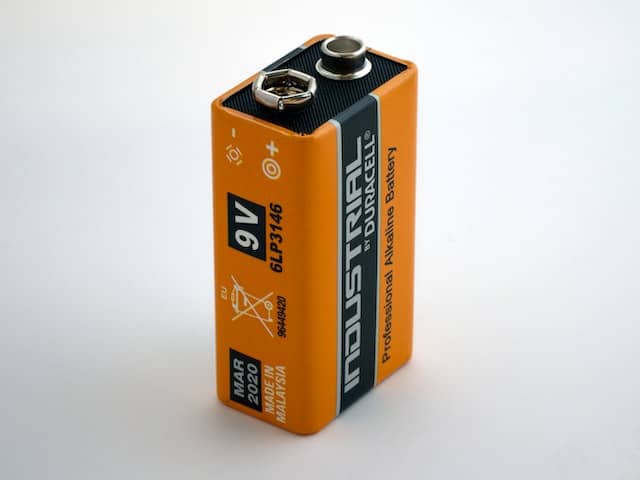
Battery packs are a great option for those who need longer battery life than what is provided by a built-in battery and do not want to connect their dash cam directly to their vehicle’s battery.
In addition, battery packs offer extended power supply and are often more cost-effective. These battery packs can be connected to the dash cam’s cigarette socket adaptor using lighter cables to transmit power signals.
Using a battery pack can provide a more flexible and convenient power source for your dash cam, allowing you to use it in a wider range of situations without worrying about running out of battery.
It’s important to choose a battery pack with enough capacity to meet your needs, and to make sure it’s fully charged before using it. Keep in mind that battery packs will eventually run out of power and need to be recharged, so it’s important to plan accordingly.
Using battery packs in combination with the dash cam’s built-in battery is recommended to ensure you always have the power backup. However, you have to recharge them regularly.
Pros
- Affordable
- Extended power supply
- Works with 12V supply
- Comes with installation wires/cables
Cons
- Need recharging
The Bottom Line
When it comes to powering your dash cam, you’ve got a few options to choose from. You can use the built-in battery, the vehicle’s battery, hardwire it, or use battery packs. Each option has its pros and cons.
If you’re looking for reliability, then using the vehicle battery is your best bet. These larger batteries offer an extended power supply and minimize the chances of low-quality footage.
However, built-in batteries or battery packs can come in handy during emergencies, like when your car gets into an accident, and the connection to the vehicle’s battery is cut off. In these cases, the dash cam’s batteries ensure that the footage keeps recording, and that video files don’t get corrupted if the power is cut abruptly.
So, what do you think? Which option would work best for you?

